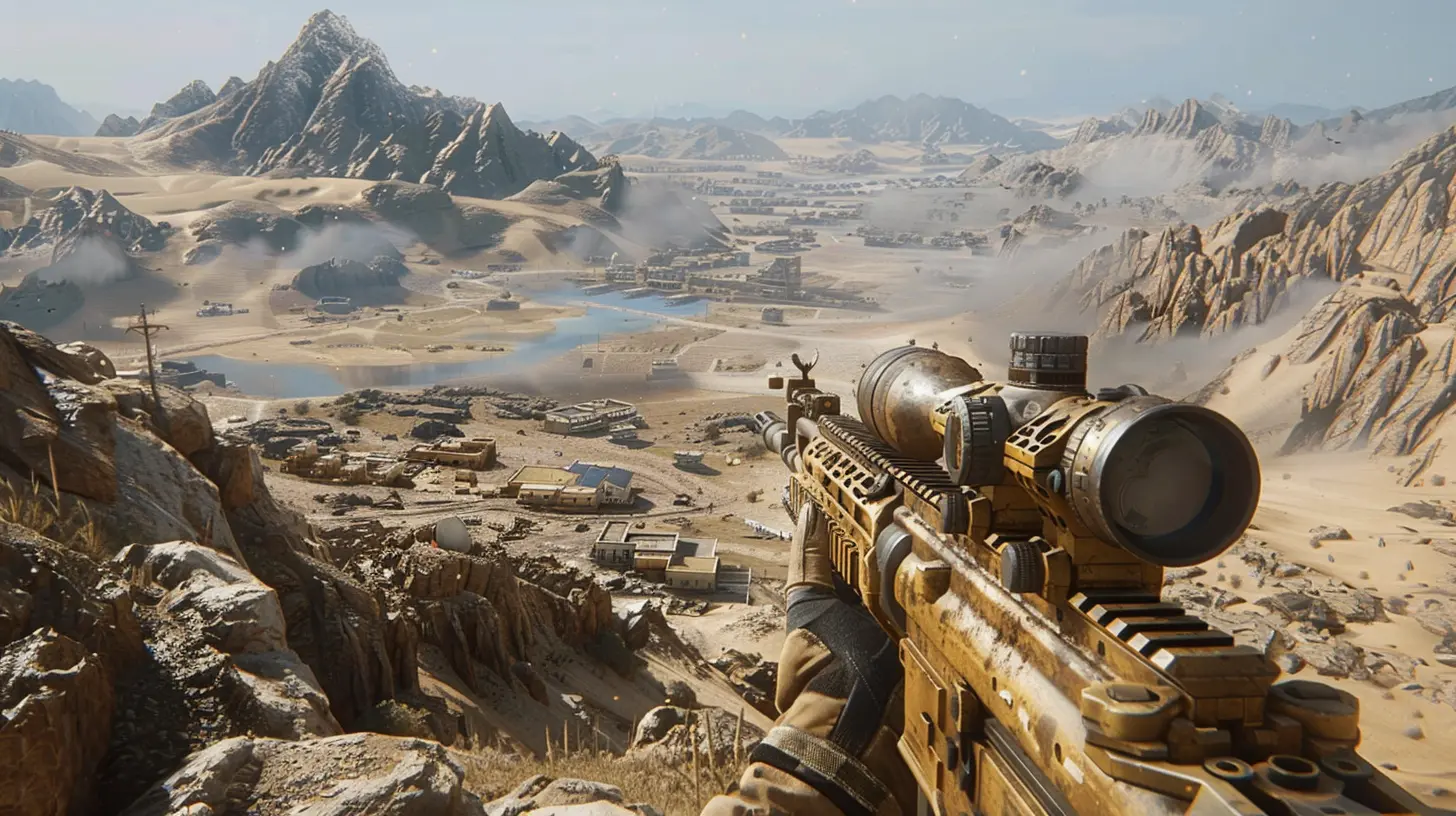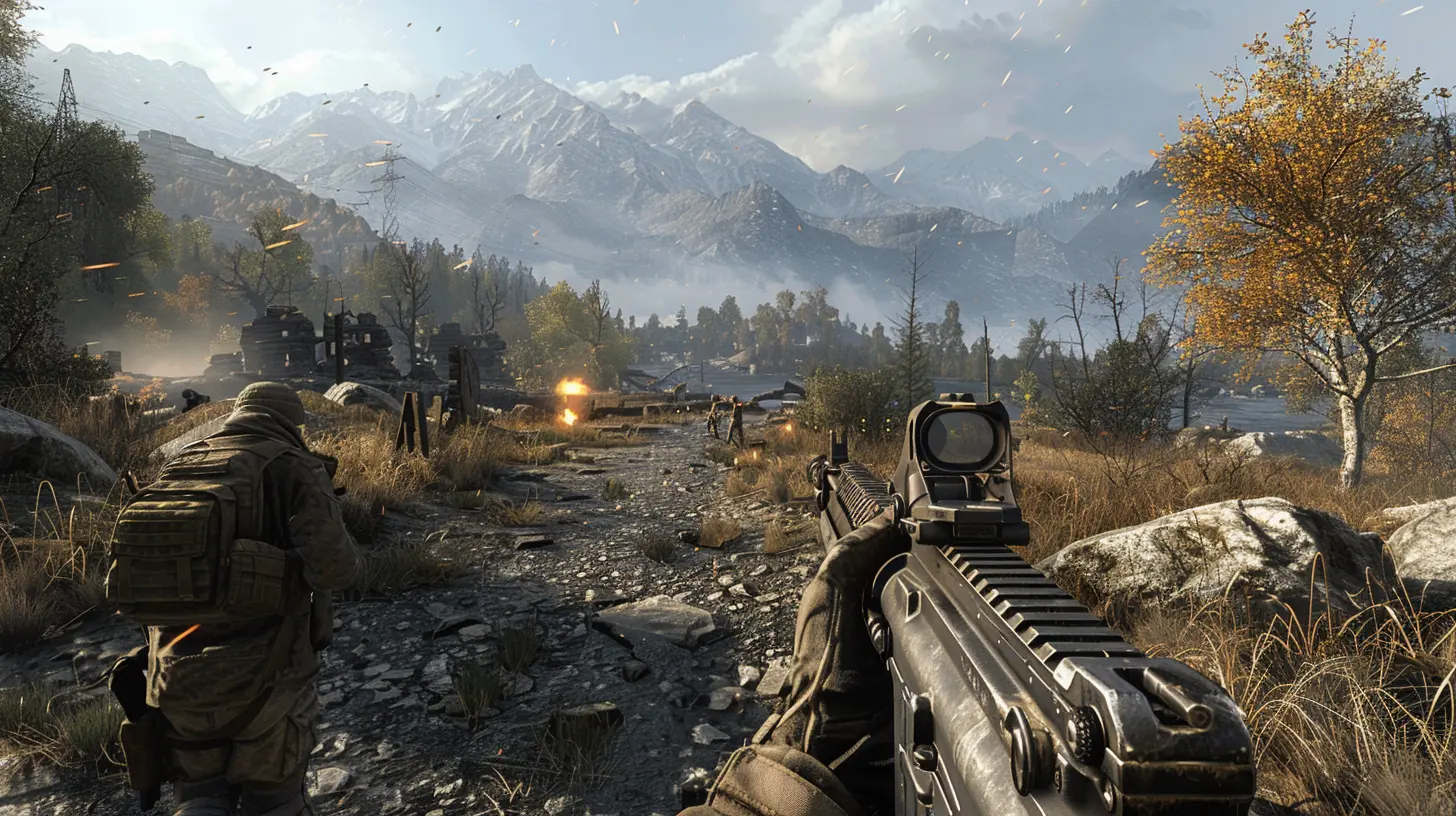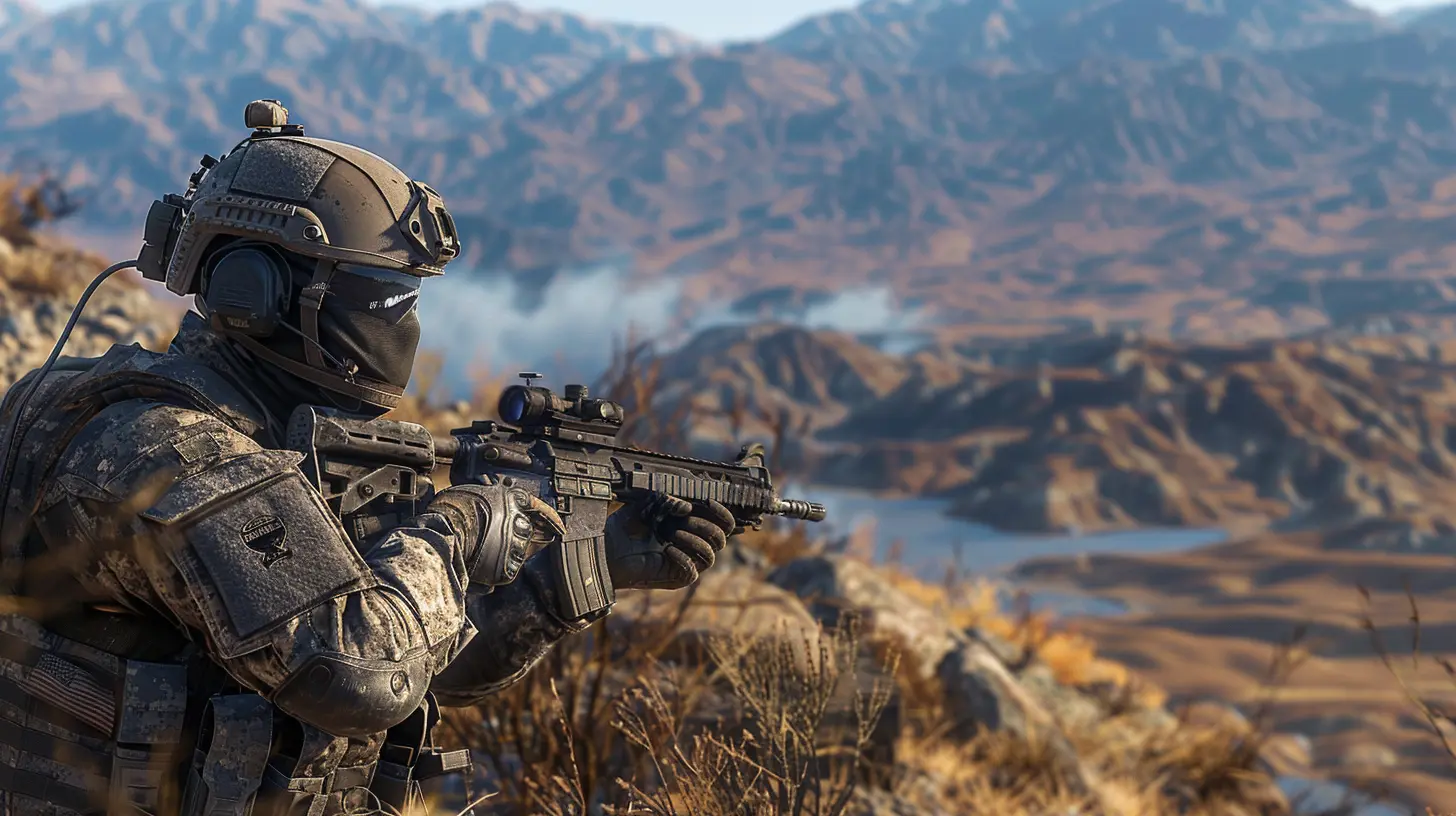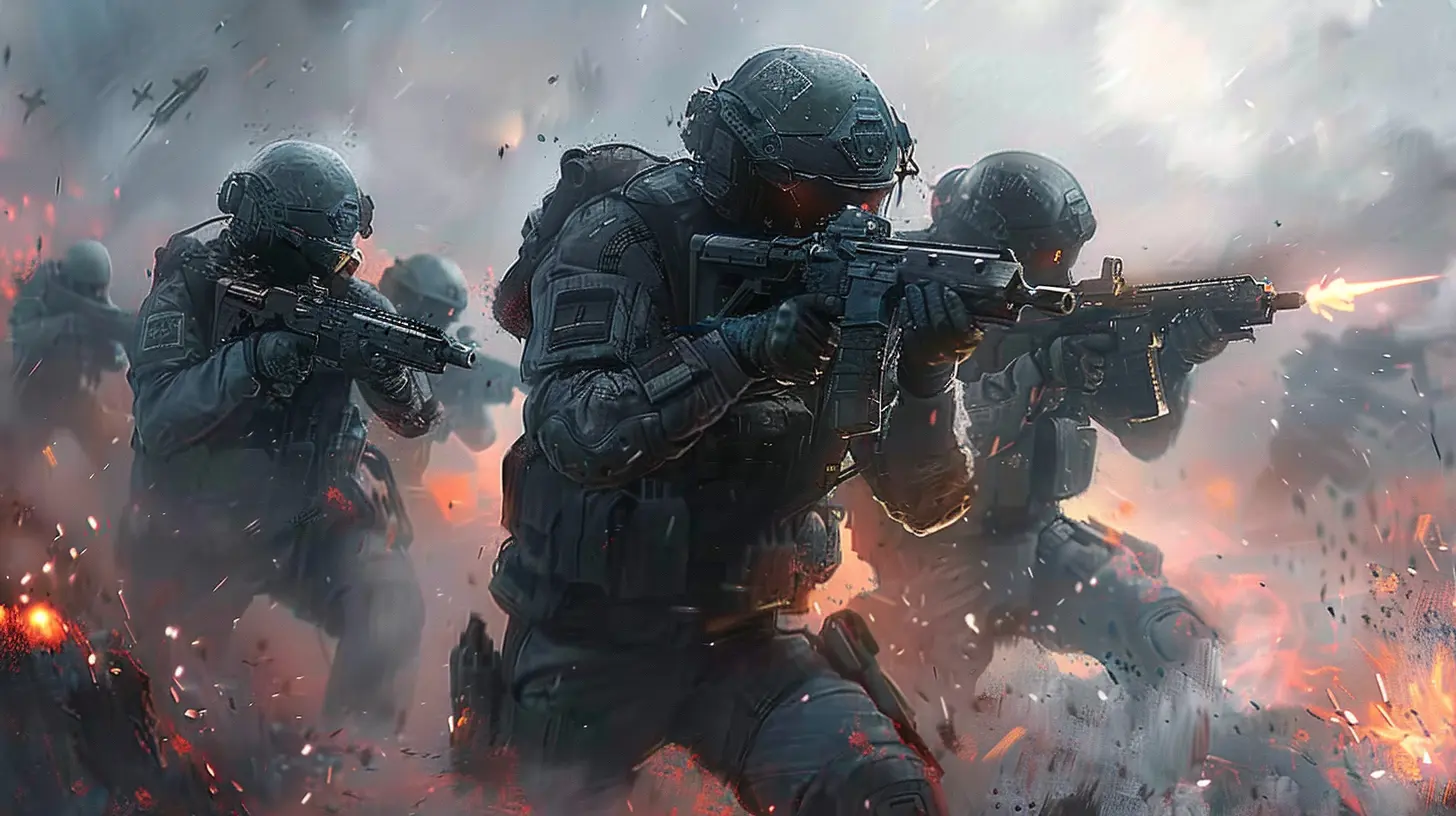The Role of AI Opponents in Single-Player FPS Campaigns
6 July 2025
Let’s be honest—there’s something oddly satisfying about outsmarting AI enemies in a first-person shooter (FPS). Whether you’re sneaking up on a clueless patrol or surviving a full-on assault from a group of organized bots, AI plays a massive part in making those single-player campaigns feel alive and challenging.
But how much thought actually goes into those enemies you’re mowing down? And how have they evolved to become more than just bullet sponges? Today, we’re diving deep into the role of AI opponents in single-player FPS campaigns—their impact, evolution, and what the future might hold.
Why AI Opponents Matter in Single-Player FPS Games
You might think of AI (artificial intelligence) enemies as just filler content to shoot between big story moments. But in reality, they’re the backbone of any single-player FPS experience. They drive the tension. They test your skills. And maybe most importantly, they keep you coming back for more.Think of it like this: if the AI is too dumb, it feels like you’re fighting cardboard cutouts. Too smart or overpowered, and it feels like the game’s cheating. Striking that balance is what makes the gameplay feel smooth, immersive, and rewarding.
The Evolution of AI in FPS Games
The Early Days of AI: Predictability at its Peak
Back in the day, AI was pretty basic. We’re talking about 90s classics like DOOM or Wolfenstein 3D. The enemies didn’t have much in terms of intelligence; they’d see you, run straight at you, and shoot until one of you dropped. No flanking, no tactics—just raw aggression.Yet, even in those early games, the challenge came from numbers and speed. Developers had to make up for the AI's lack of brains with brute force.
The Golden Age: Introduction of Tactical AI
Fast forward to the early 2000s—enter titles like Half-Life, F.E.A.R., and Halo. These games introduced enemies that didn’t just shoot wildly; they took cover, communicated, flanked, and even retreated when necessary.Remember the soldiers in F.E.A.R.? They felt almost human in the way they coordinated and tried to flush you out. It was a big leap forward in AI-driven behavior, and it played a major role in immersing the player in the world.
Modern AI: Smarter, Faster, Still Not Quite Human
Today’s FPS AI has come a long way, thanks to better hardware and machine-learning-influenced scripting. Games like Titanfall 2, Metro Exodus, and Call of Duty: Modern Warfare (2019) showcase enemies that respond to your actions dynamically.They’re programmed with decision trees, pattern recognition, and even situational awareness. If you're hiding behind the same cover for too long, the AI might flank or flush you out with grenades. Getting pinned down? They'll press the advantage. You’re no longer fighting braindead bots—you’re dealing with opponents that shape the entire experience.
How AI Enhances the Gameplay Experience
Maintaining Challenge and Tension
Let’s face it—we want to feel like a badass in FPS games. But that glory isn’t worth much if it feels handed to you. AI opponents bring that constant tug-of-war where you have to earn every victory.Good AI ramps up tension without overwhelming you. Whether it’s a stealth section where enemies react to sound and sight or a chaotic firefight where they communicate and surround you, AI injects unpredictability into each encounter.
Immersing You in the World
You know those moments when an enemy shouts “He's over here!” or ducks after missing a shot? That’s AI contributing to world-building. They’re not just enemies—they’re part of the narrative fabric.A well-programmed AI opponent acts like a character with purpose, not just a placeholder. In games like Far Cry or The Last of Us, AI can behave scared, aggressive, desperate, or cunning. That range of emotions makes the world feel genuine and reactive.
Enabling Replayability
One of the unsung roles of AI in single-player FPS games is boosting replay value. Think about it: if every enemy behaved the same way every time, you'd get bored fast.Good AI adapts or offers variability in behavior, so no two playthroughs feel identical. You might find new ways to approach a mission or see enemies reacting differently based on how you play.
The Technical Side: How AI Enemies Work
Without diving too deep into code soup, let’s look at what goes into creating AI opponents that don't suck.Behavior Trees
These are like decision-making maps. Based on what’s happening (e.g., player spotted, under fire, low health), an AI picks the best path—take cover, call for backup, charge in, etc.It’s not true intelligence, but it’s surprisingly effective at simulating smart behavior.
Scripting and Trigger Zones
Many FPS levels include pre-scripted moments. You walk in a room, enemies spawn, a dramatic cutscene unfolds. But even within these controlled environments, AI can have free-will-like behaviors.Trigger zones define when and how AI reacts, but variables like player positioning, noise, and weapon choice can sway their actions.
Fuzzy Logic and Probability
Some modern AIs incorporate fuzzy logic, which allows for a bit of unpredictability. It’s not always a guaranteed response—maybe the enemy throws a grenade 70% of the time, or decides to retreat based on a set of uncertain factors.This adds realism and makes enemy behavior feel less like a computer following a checklist.
Memorable Examples of Great FPS AI
F.E.A.R. - Intelligent Combat Tactics
If you’ve ever played F.E.A.R., you know the AI was the star of the show. Enemies flanked, used suppressive fire, and reacted to your moves like they were working together. It made every encounter nerve-wracking and satisfying.Halo Series – The Covenant’s Mixed Squadrons
Halo's AI achieved something special: variety. Grunts, Elites, and Jackals all had different tools and behaviors. Some rushed in, others hung back and provided support. Fighting a group meant real-time prioritization and strategy.The Last of Us Part II – Human-Like Behavior
In a more narrative-focused FPS-adjacent style, The Last of Us Part II took AI enemies to an emotional level. Opponents called each other by name, panicked when isolated, and searched methodically. That humanization made every fight more impactful.The Limitations and Challenges of AI in FPS Campaigns
Of course, it’s not all perfect. AI still hits a wall—literally and figuratively.- Predictable Loops: Once you figure out the AI patterns, they lose their edge.
- Resource Intensive: Smart AI eats up memory and processing power, which can hurt performance.
- Over-Scripting: Too many scripted behaviors can kill the illusion of intelligence.
- Difficulty Scaling: Sometimes “smarter AI” just means they aim better or have more health, which isn’t true intelligence.
It’s a delicate dance. You want AI that feels smart, but not unfair. And sometimes, the illusion of intelligence is better than the real thing.
The Future of AI in Single-Player FPS Games
Here’s where things get interesting. We’re entering an era where advances in machine learning and neural networks could redefine AI in gaming.Imagine opponents that learn from your playstyle, adapt over time, and evolve their tactics mid-game. AI that watches how you handle stealth, aggression, or exploration—and counters accordingly.
Some developers are already experimenting with procedural AI that isn't fully scripted. Combine that with real-time learning, and you could have the most lifelike adversaries we've ever seen in games.
Of course, with great power comes great potential to frustrate players. So developers will still need to focus on balance and fun.
Final Thoughts
AI opponents in single-player FPS campaigns are more than just digital targets—they're the unsung heroes that shape how we experience the game. From the early days of simple run-and-gun bots to today’s immersive, responsive enemies, AI has come a long way.And while we’re not quite at sci-fi levels of sentient NPCs (thankfully), the future looks promising. With smarter, more reactive opponents, single-player FPS games might just feel more alive than ever.
So the next time you get flanked, pushed out of cover, or hear an enemy call out your position, take a second to appreciate the behind-the-scenes magic. The AI isn’t just playing the game—it’s playing you.
all images in this post were generated using AI tools
Category:
First Person ShooterAuthor:

Pascal Jennings
Discussion
rate this article
1 comments
Joanna Lynch
This article beautifully highlights the evolving role AI opponents play in enhancing single-player FPS experiences. Their complexity not only challenges players but also enriches storytelling, making each encounter memorable. Grateful for your insights on this vital aspect of gaming!
July 16, 2025 at 2:39 AM

Pascal Jennings
Thank you for your thoughtful comment! I'm glad you found the insights on AI opponents' impact on gameplay and storytelling valuable.


